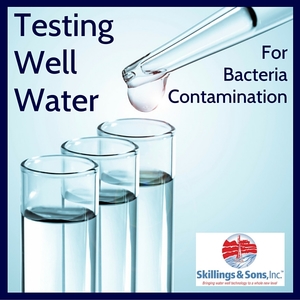Getting My Bacteria Testing To Work
Table of ContentsSome Known Factual Statements About Bacteria Testing Bacteria Testing Can Be Fun For AnyoneNot known Incorrect Statements About Bacteria Testing The Single Strategy To Use For Bacteria TestingSome Known Details About Bacteria Testing A Biased View of Bacteria Testing
Coliforms are microorganisms that are always existing in the digestion systems of pets, consisting of humans, and are discovered in their wastes - Bacteria Testing. They are likewise discovered in plant and dirt product. Water air pollution brought on by fecal contamination is a serious trouble due to the potential for contracting conditions from virus (diseasecausing organisms)
Complete coliform counts offer a basic indication of the sanitary condition of a water. consist of bacteria that are found in the dirt, in water that has actually been influenced by surface area water, and in human or animal waste. are the team of the overall coliforms that are considered to be present particularly in the digestive tract and feces of warm-blooded pets.
Bacteria Testing Can Be Fun For Anyone

Current outbreaks of disease triggered by E. coli 0157: H7 have generated much public concern concerning this microorganism. E. coli 0157: H7 has actually been located in livestock, chickens, pigs, and sheep.
Checking for bacteria is the only reliable way to understand if your water is safe. You can not inform by the appearance, taste, or smell of the water if disease-causing microorganisms are in it.
Bacteria Testing for Beginners

Although overall coliforms can originate from sources apart from fecal issue, a positive complete coliform example must be thought about an indicator of pollution in your well. Favorable fecal coliform outcomes, specifically positive E. Coli results, ought to be taken into consideration sign of fecal air pollution in your well. When coliforms have been identified, repair work or adjustments of the water supply might be called for.
A defective well is usually the cause when coliform bacteria are located in well water. - seals around wires, pipes, and where the cap fulfills the covering may be broken, letting in pollutants - fractures or holes in the well casing enable water that has not been filtered through the soil to go into the well.
Bacteria Testing Fundamentals Explained
The U. S. Environmental Protection Agency (EPA) requires public water supply to consistently check water for total coliform bacteria and read more E. coli. Safe drinking water does not have E (Bacteria Testing). coli or other virus in it. Below are some suggestions on how to prevent and resolve coliform microorganisms contamination: Safeguard Your Well by constructing it in a risk-free place
You are liable for maintaining your well water risk-free and screening it as required. You can also call your county to see if they have any type of programs to make screening your water easier.
Sanitize your well with a chlorine solution, using the exact same Well Sanitation steps as above. Test your well water again after sanitation to validate there are no coliform bacteria. You can utilize the water once more, without boiling, once the well has been sanitized and the water no more evaluates positive for coliform germs.
Not known Details About Bacteria Testing
Your public water system is routinely examined for coliform microorganisms. The system will release a public notice within 24 hours if it identifies E. coli.
You can locate the coliform bacteria examination results for the systems offering locations various other than where you obey speaking to the water supply.
The National Ground Water Association (NGWA) advises well proprietors examine their water at the very least every year for germs, nitrates, and any contaminants of neighborhood problem. More constant screening should be considered if: There is a change in the preference, smell, or appearance of the well water, or if an issue occurs such as a broken well cap, inundation by floodwaters, or a new contamination resource The well has a history of microbial contamination The septic tank has just recently malfunctioned Household members or home visitors have persistent incidents of intestinal illness An infant is staying in the home, read this post here or To keep track of the efficiency and efficiency of home water therapy equipment.
Getting The Bacteria Testing To Work
Additional tests may be advised if water appears gloomy or oily, if bacterial growth shows up on components, or water therapy devices are try these out not functioning as they should. Check with your water well specialist, state division of natural deposits, or regional health and wellness department for information on local water quality problems.Evaluate your water a minimum of 2 times a year. Call a public health examiner to see what's finest for your water system. Coliforms are a group of bacteria that are practically all over. They are in soil, plants, sewer, and manure. E. coli are microorganisms that individuals and some pets have in their intestines.